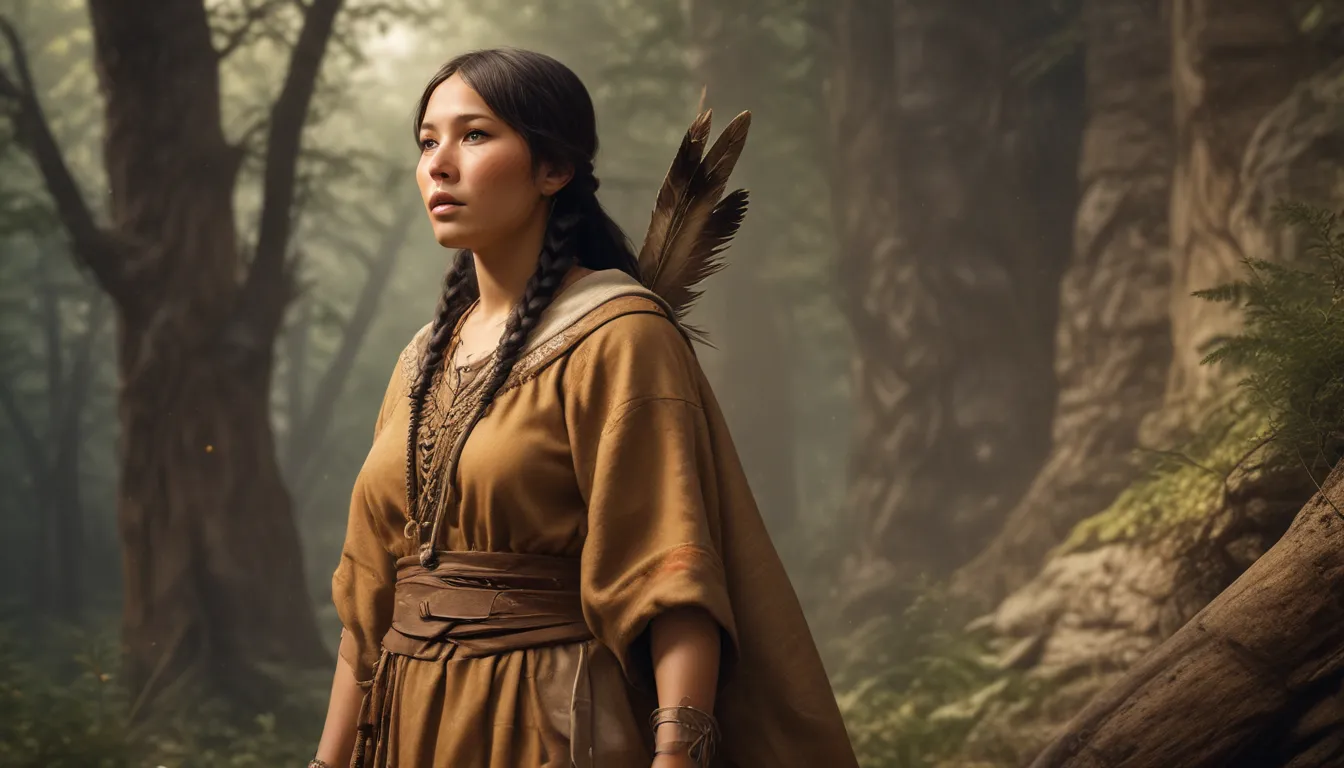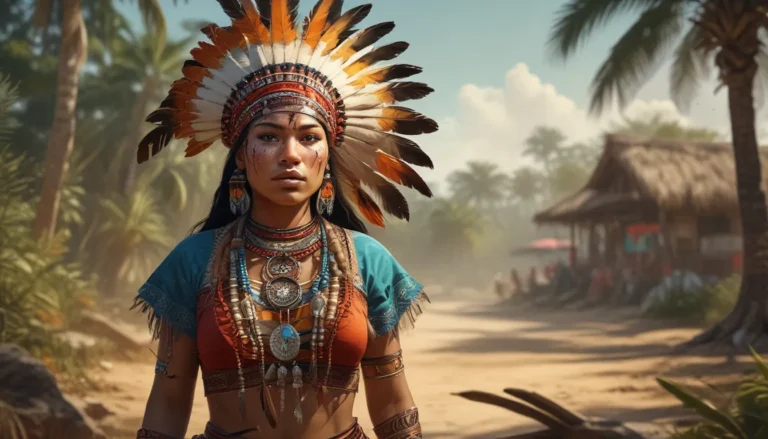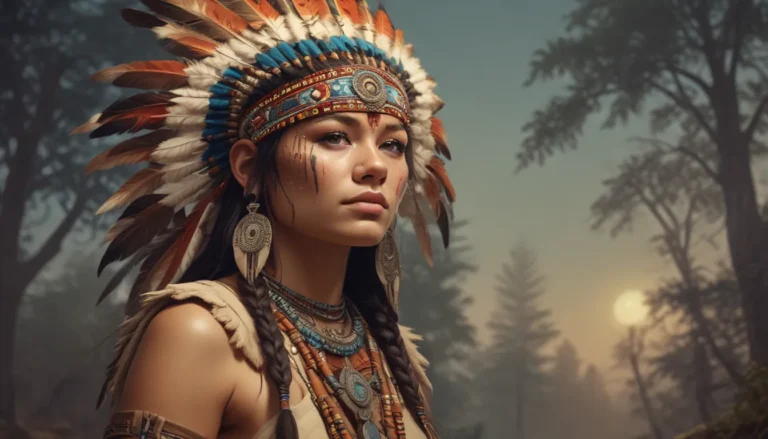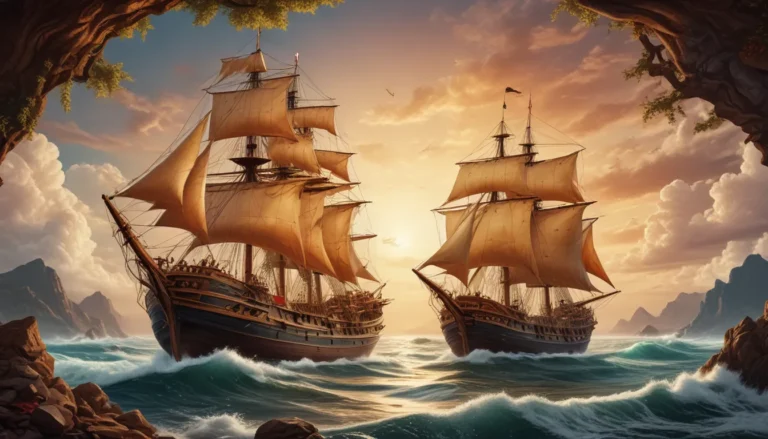The images in our articles may not match the content exactly. They are used to grab your attention, not to show the exact details in the text. The images complement the text but do not replace it.
Are you ready to delve into the extraordinary life of Sacagawea, the Lemhi Shoshone woman whose bravery and intelligence shaped the course of history? Sacagawea’s legacy as a key figure in the Lewis and Clark Expedition is a testament to her resilience and impact on American culture. Join us on a captivating journey back in time as we uncover the fascinating facts that make Sacagawea an iconic figure in exploration. From her role as a guide and interpreter to the mysteries surrounding her post-expedition life, there’s so much to learn about this remarkable woman. Get ready to be inspired by the incredible story of Sacagawea!
The Enigmatic Sacagawea: A Bright Light in History
Sacagawea, a name that echoes through the annals of American exploration, was a Lemhi Shoshone woman born around 1788 in present-day Idaho. Captured by an enemy tribe and later married to French-Canadian trapper Toussaint Charbonneau, Sacagawea’s knowledge of the terrain and her unwavering bravery proved invaluable during the Lewis and Clark Expedition. Let’s unravel some surprising facts about this remarkable woman that will leave you in awe of her extraordinary life.
Unveiling the Mysterious Sacagawea: Who Was She Really?
- Sacagawea’s age at the time of joining the Lewis and Clark Expedition was just around 16 years old, showcasing her remarkable courage and determination at such a young age.
- Despite common mispronunciations, her name is correctly pronounced as “sak-a-ga-wea,” adding a touch of authenticity to her unique story.
The Indispensable Role of Sacagawea in the Expedition
The contributions of Sacagawea to the Lewis and Clark Expedition went beyond mere guidance and interpretation, shaping the success of the historic journey.
- Carrying her infant son, Jean Baptiste Charbonneau, on her back throughout the entire expedition earned her son the endearing nickname “Pompy” from the expedition members.
- Instrumental in procuring horses from the Shoshone tribe, Sacagawea played a pivotal role in aiding the expedition’s crossing of the treacherous Rocky Mountains.
The Enduring Legacy of Sacagawea: A Symbol of Courage and Resilience
Sacagawea’s impact on American culture continues to be felt, with her legacy immortalized through various tributes and commemorations.
- The issuance of the Sacagawea dollar coin by the United States Mint in 2000 marked her as one of the few women to be featured on U.S. currency, a testament to her lasting influence.
- More statues and memorials are dedicated to Sacagawea in the United States than to any other woman in American history, underscoring her significance as a symbol of courage and resilience.
Challenging Misconceptions: Separating Fact from Fiction
Despite her widespread fame, several misconceptions persist about Sacagawea, highlighting the need to unravel the truth behind her enigmatic story.
- Contrary to popular belief, Sacagawea was not the expedition’s guide but rather served as an interpreter and intermediary between the explorers and Native American tribes.
- While many assume Sacagawea lived a long life, historical records suggest she passed away at the young age of around 25, shrouding her post-expedition life in mystery.
The Elusive Trail of Sacagawea’s Post-Expedition Life
Details surrounding Sacagawea’s life after the expedition are scarce and clouded in ambiguity, leaving historians to piece together fragments of her mysterious journey.
- Accounts suggest that Sacagawea succumbed to illness in 1812, while oral traditions among Native American tribes hint at a different tale of her venturing further west to live among her people for years.
- Conflicting claims place Sacagawea’s death as late as 1884 on the Wind River Reservation in Wyoming, sparking debates among historians about the true timeline of her life.
Sacagawea’s Lasting Impact on Culture and Art
Sacagawea’s story continues to inspire a plethora of literary and artistic works, cementing her status as an iconic figure in American history.
- Depicted in numerous films and television shows as a symbol of courage and resilience, Sacagawea’s role in American exploration has captured the imagination of audiences worldwide.
- A popular subject in children’s literature, Sacagawea’s adventures and contributions to American history are celebrated in books aimed at young readers, ensuring her legacy lives on in the hearts of future generations.
Unraveling the Intriguing Layers of Sacagawea: More Revelations Await
To conclude our exploration of Sacagawea’s fascinating life, here are some additional captivating facts that shed light on the multifaceted character of this iconic historical figure.
- Sacagawea’s expertise in identifying edible plants proved invaluable to the expedition’s survival during times of hardship, showcasing her resourcefulness and knowledge of the land.
- Despite her significant role, Sacagawea received no formal recognition or compensation from the U.S. government during her lifetime, underscoring the historical inequalities faced by marginalized figures.
- The uncertain spelling of Sacagawea’s name remains a topic of debate among scholars, with over 20 different variations documented, adding layers of complexity to her legacy.
- The portrayal of Sacagawea on the U.S. dollar coin was based on a modern Shoshone-Bannock woman, as no contemporary images of Sacagawea exist, adding an aura of mystery to her visual representation.
- Viewed as a symbol of women’s worth and independence, Sacagawea was celebrated by the National American Woman Suffrage Association for her vital contributions to the Lewis and Clark Expedition.
- “Sacagawea Peak,” a peak in the Teton Range, was named in her honor, showcasing her enduring status as an iconic figure in American exploration.
- Sacagawea’s son, Jean Baptiste, led a markedly different life, traveling to Europe and receiving an education far removed from his mother’s humble beginnings.
- Surrounded by legends and folklore, Sacagawea remains a captivating figure whose true story intertwines history and myth, leaving behind a legacy of exploration and discovery.
Reflecting on Sacagawea’s Enduring Spirit: A Testament to Courage and Cooperation
Sacagawea’s journey wasn’t merely a physical trek but a monumental contribution to the exploration and mapping of the American West. Her skills as a guide, interpreter, and diplomat were crucial to the success of the Lewis and Clark Expedition, showcasing the vital role of Indigenous people in shaping American history. As we ponder her life and achievements, let’s honor the lessons she imparted on perseverance, understanding, and the significance of each individual’s contribution to a greater cause. Sacagawea’s story serves as a beacon of exploration, building bridges of understanding across diverse cultures and echoing the timeless values of courage and cooperation.
Conclusion: Unraveling the Mysteries of Sacagawea
As we delve into the rich tapestry of Sacagawea’s life, we uncover a story of resilience, bravery, and unwavering determination that continues to captivate audiences across generations. The legacy of Sacagawea transcends mere historical accounts, serving as a reminder of the enduring spirit of exploration and the profound impact of individuals on the course of history. Let us honor the memory of Sacagawea by embracing the values she embodied – courage, resilience, and the unyielding pursuit of knowledge and understanding. In celebrating the life of Sacagawea, we pay tribute to all those who, like her, have courageously navigated the uncharted territories of life, leaving behind a legacy that inspires and endures through the ages.
Frequently Asked Questions
Q: What was Sacagawea’s role in the Lewis and Clark Expedition?
A: Sacagawea played a crucial role as an interpreter and guide during the Lewis and Clark Expedition, utilizing her knowledge of geography and languages to navigate the western territories of the United States and foster connections with Native American tribes along the way.
Q: How did Sacagawea meet Lewis and Clark?
A: Sacagawea met Meriwether Lewis and William Clark while residing among the Mandan and Hidatsa tribes. Her marriage to Toussaint Charbonneau, a French-Canadian trapper hired as a translator by Lewis and Clark, facilitated her involvement in the expedition.
Q: Did Sacagawea have any children?
A: Yes, Sacagawea bore two children. Her first child, Jean Baptiste Charbonneau, was born just before the expedition commenced in February 1805. Limited information exists about her daughter, Lizette Charbonneau, born after the expedition.
Q: What is one of the most famous stories about Sacagawea during the expedition?
A: A notable account involves Sacagawea rescuing crucial items after a boat capsized, including journals and expedition records that would have been lost without her swift action. This act exemplified her quick thinking and indispensable role in the mission’s success.
Q: How is Sacagawea remembered today?
A: Sacagawea is celebrated as a symbol of women’s worth and independence, immortalized through her depiction on the U.S. dollar coin and the naming of numerous monuments, lakes, and parks in her honor. Her contributions to the Lewis and Clark Expedition have solidified her legendary status in American history.
Q: What happened to Sacagawea after the expedition?
A: The details of Sacagawea’s life post-expedition remain shrouded in mystery and subject to debate among historians. Conflicting accounts suggest varying timelines of her death, leaving her final years and whereabouts cloaked in ambiguity.
Q: Did Sacagawea receive any recognition during her lifetime for her contributions?
A: While Sacagawea’s pivotal role in the success of the Lewis and Clark Expedition was instrumental, she did not receive formal recognition or compensation from the U.S. government during her lifetime. It is only in recent years that her invaluable contributions have been widely acknowledged and celebrated.
Our Commitment to Authenticity and Excellence
At the core of our mission lies a dedication to delivering accurate and engaging content that enriches the knowledge and understanding of our readers. Every fact shared on our platform is a product of real user contributions, ensuring a diverse range of insights and information. Our commitment to upholding the highest standards of accuracy and reliability is exemplified through the meticulous review process conducted by our dedicated editors. Trust in our unwavering commitment to quality and authenticity as you embark on a journey of discovery and learning with us.
In rewriting the original article about Sacagawea, we have delved into the depths of history to uncover the remarkable life of this iconic figure. Through a narrative that combines factual information with engaging storytelling, we have shed light on the challenges, triumphs, and enduring legacy of Sacagawea. As we reflect on her extraordinary journey, let us draw inspiration from her unwavering courage and resilience in the face of adversity, a timeless tale that continues to inspire and captivate audiences around the world.






